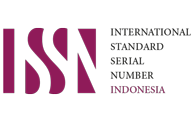Pengaruh Struktur Utang dan Likuiditas terhadap Kinerja Perusahaan: Studi Empiris pada Perusahaan Farmasi yang terdaftar di Bursa Efek Indonesia (BEI) Tahun 2019-2024
Abstract
This research is motivated by the pharmaceutical companies that are in high debt and have been sued, and company losses have increased sharply from the previous year. This study aims to examine the influence of debt structure and liquidity on firm performance among pharmaceutical companies listed on the Indonesia Stock Exchange from 2019 to 2024. This research utilized secondary data from financial statements of individual pharmaceutical companies obtained from the official website of the Indonesia Stock Exchange and respective company websites. The sample consists of 53 observations, employing multiple linear regression analysis with financial ratio analysis using IBM SPSS software. The results demonstrate that both debt structure and liquidity simultaneously have a significant influence on firm performance. The findings indicate that debt structure has a negative partial effect on firm performance, while liquidity has a positive partial effect on firm performance. Future research is recommended to explore additional internal and external variables and implement more dynamic analytical methods to better explain variations in firm performance.
References
Anichebe, A. S. D., & Dike, C. C. (2016). Effect of debt mix on firm performance. Journal of Accounting, Business and Social Sciences, 1(1), 1–12.
Bari, M. K., Ghosh, S. K., & Kabir, M. R. (2021). Relationship between Liquidity and Firm Performance: Evidence from the Pharmaceutical Industry of an Emerging Economy. Journal of Knowledge Globalization, 13(1), 75–108. https://www.journal.kglobal.org/index.php/jkg/article/view/277
Basuki, A. T., & Prawoto, N. (2015). Analisis Regresi dalam Penelitian Ekonomi dan Bisnis. In PT Rajagrafindo Persada.
Brealey, R. A., Myers, S. C., & Allen, F. (2020). Principles of Corporate Finance (13th ed.). McGraw-Hill Education.
Brigham, E. F., & Houston, J. F. (2019). Fundamentals of FINANCIAL MANAGEMENT (15th ed.). Cengage Learning.
Cooper, D. R., & Schindler, P. S. (2014). Business Research Methods (12th ed.). McGrawHill/Irwin. www.mhhe.com
DiMasi, J. A., Grabowski, H. G., & Hansen, R. W. (2016). Innovation in the pharmaceutical industry: New estimates of R&D costs. Journal of Health Economics, 47, 20–33. https://doi.org/10.1016/j.jhealeco.2016.01.012
Fama, E. F., & French, K. R. (2017). International Tests of a Five-Factor Asset Pricing Model. Journal of Financial Economics, 123, 441–463. https://doi.org/https://doi.org/10.1016/j.jfineco.2016.11.004
Ghozali, I. (2018). Aplikasi Analisis Multivariate Dengan Program IBM SPSS 25 (9th ed.). Badan Penerbit Universitas DIponegoro.
Ghozali, I., & Ratmono, D. (2018). Analisis Multivariat dan Ekonometrika: Teori, Konsep, dan Aplikasi dengan EViews 10 (2nd ed.). Badan Penerbit Universitas DIponegoro.
Gitman, L., & Zutter, C. (2018). Principles of Managerial Finance (13th ed.). Pearson Educated Limited.
Gujarati, D. N., & Porter, D. C. (2015). Basic Econometrics. In The McGraw-Hill Series Economics (5th ed.).
Hery. (2016). Analisis Kinerja Keuangan. PT Grasindo.
Jensen, M. C., & Heckling, W. H. (1976). THEORY OF THE FIRM: MANAGERIAL BEHAVIOR, AGENCY COSTS AND OWNERSHIP STRUCTURE. Journal of Financial Economics, 3, 305–360. https://doi.org/10.1057/9781137341280.0038
Kaplan, R. S., & Norton, D. P. (1996). The Balanced Scorecard: Translating Strategy Into Action. In Harvard Business School Press. https://doi.org/10.1109/jproc.1997.628729
Kasmir. (2018). Analisis Laporan Keuangan. PT. Raja Grafindo Persada.
Kemenperin. (2023). Kemenperin: Terus Ekspansi, Sektor IKFT Genjot Investasi. Kementerian Perindustrian Republik Indonesia. https://bbt.kemenperin.go.id/blog/konten-53#:~:text=Industri kimia%2C farmasi%2C dan tekstil,nasional mencapai 3%2C88 persen.
Modigliani, F., & Miller, M. H. (1958). The Cost of Capital, Corporation Finance and the Theory of Investment. The American Economic Review, 48(3), 261–297. https://doi.org/10.1136/bmj.2.3594.952
Myers, S. C. (2001). Capital structure. Journal of Economic Perspectives, 15(2), 81–102. https://doi.org/10.4324/9781003073796-9
Nazir, A., Azam, M., & Khalid, M. U. (2021). Debt financing and firm performance: empirical evidence from the Pakistan Stock Exchange. Asian Journal of Accounting Research, 6(3), 324–334. https://doi.org/10.1108/AJAR-03-2019-0019
Ross, S. A., Westerfield, R. W., & Jordan, B. D. (2019). Fundamentals of Corporate Finance (12th ed.). McGraw-Hill Education.
S., M. (2014). Analisis Laporan Keuangan (Liberty (ed.)).
Schweitzer, S. O., & Lu, Z. J. (2018). Pharmaceutical Economics and Policy (3rd ed.). Oxford University Press.
Sekaran, U., & Bougie, R. (2016). Research Methods for Business: A Skill-Building Approach (7th ed.). John Wily & Sons Ltd. http://repository.lppm.unila.ac.id/id/eprint/12007
Sudana, I. M. (2015). Manajemen Keuangan Perusahaan : Teori dan Praktik (2nd ed.). Penerbit Erlangga.
Sugiyono. (2017). Metode Penelitian Kuantitatif, Kualitatif dan R&D (25th ed.). Penerbit Alfabeta Bandung.
Tretiakova, V. V., Shalneva, M. S., & Lvov, A. S. (2021). The Relationship between Capital Structure and Financial Performance of the Company. SHS Web of Conferences, 91(01002), 1–9. https://doi.org/10.1051/shsconf/20219101002
Van Horne, J. C., & Wachowicz, J. M. (2021). Prinsip-prinsip manajemen keuangan. Salemba Empat.
Wardah, N., Sundarta, H. M. I., & Hurriyaturrohman, H. (2024). Pengaruh Tingkat Likuiditas dan Struktur Utang Terhadap Kinerja Perusahaan Pada Industri Manufaktur di BEI (Studi Kasus Pada Sub Sektor Semen Periode 2017-2021). ECo-Fin, 6(2), 110–120. https://doi.org/10.32877/ef.v6i2.909
Yameen, M., Farhan, N. H. S., & Tabash, M. I. (2019). The impact of liquidity on firms’ performance: Empirical investigation from Indian pharmaceutical companies. Academic Journal of Interdisciplinary Studies, 8(3), 212–220. https://doi.org/10.36941/ajis-2019-0019







.png)
.png)
